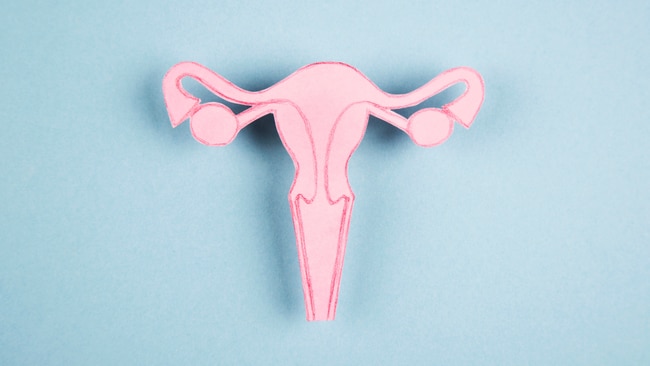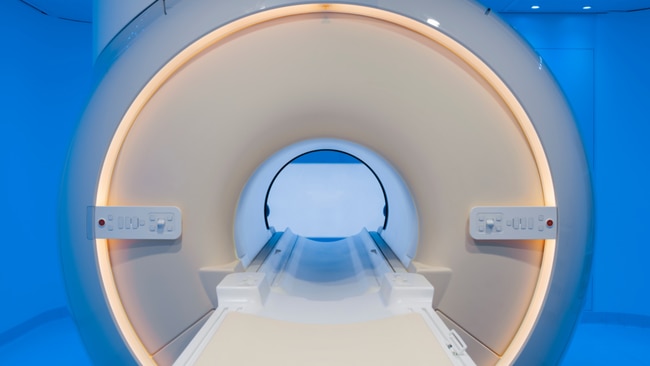Researchers have found a less invasive method to diagnose endometriosis
This is a game changer

Endometriosis
Don't miss out on the headlines from Endometriosis. Followed categories will be added to My News.
Based on research using a combination of ultrasound, magnetic resonance imaging (MRI), and artificial intelligence, a method of diagnosing endometriosis without surgery could be available within the next two years.
Endometriosis, also known as endo, affects one out of every nine Australians who have a uterus and can have aand chronic devastating impact on their lives and fertility. Nonetheless, despite its prevalence, diagnosis is challenging.
Confirming an endo diagnosis can entail overcoming debilitating pain to see a doctor, being believed, and being able to afford the exorbitant costs of hospital referrals, multiple scans, and, eventually, invasive surgery followed by a lengthy recovery. Not to mention that the average time for this process in Australia is seven years, and globally can take up to 12 years.
However, thanks to a combination of artificial intelligence and imaging, a better and less invasive diagnostic method may be rolled out within the next two years. Even if it's the last thing AI gives us before taking over our species, anyone suffering from endometriosis will tell you it's worth it.
Like what you see? Sign up to our bodyandsoul.com.au newsletter for more stories like this.
The difficulty in diagnosing endometriosis is that small lesions in the pelvis are not detected on ultrasound and must often be detected surgically. The 'Imagendo' research team at the University of Adelaide is currently evaluating advanced ways of using imaging technology to look inside the body without the need for surgery.
The study is combining the diagnostic capabilities of pelvic ultrasounds and MRIs to better identify endometriosis lesions and develop cutting-edge algorithms for diagnosing the condition. Gynaecologist and Fertility Specialist Louise Hull told the ABC that if successful, the diagnosis model will be rolled out globally and available in clinics within the next two years.
This method can offer a quick and accurate way to identify any case of endometriosis, as well as assess the severity of the patient's individual condition and possibly distinguish between old and new disease.

Hull attributes the advances not only to technological improvements, but also to more funds and services being directed towards the condition, thank you Jenny Morrison. As a result, Hull explains dedicated "we can have really well-qualified sonographers whose main role is to do endometriosis scanning."
Funding is currently a major deterrent to scanning. According to Hull, while scans are mostly done in the private sector and funded by Medicare, "Medicare pay a fairly minimal rebate really for a pelvic ultrasound and people are disincentivised to then extend the scan which is what they need to do to look for endometriosis."
Only last November did the federal government add pelvic MRI scans for endometriosis and other fertility-related conditions to the Medicare Benefits Scheme; previously, MRIs were deemed too expensive to be used as a diagnostic tool. In short, researchers now have more tools and technology at their disposal, and Hull explains that by combining scans, ultrasounds, and MRIs, they can "add up the diagnostics to get much more accurate results for people, so they don't have to have surgery as a first step."

By eliminating surgery as the final diagnostic hurdle, not only time, money, and energy are saved, but also heartache. According to Professor Hull, research has shown that roughly one-third of people who have diagnostic surgery for endometriosis do not require the procedure. That is a heartbreaking conclusion to what has often been a year-long journey.
In other cases, the progression of endometriosis in patients was so severe that a single diagnostic surgery was insufficient. Hull explains, "They would have to stop the surgery and plan another surgery a few weeks down the track and have bowel surgeons or prepare your body differently, so you would end up having two surgeries."
Scanning is not only more efficient and less invasive, but it is also a faster process with the potential to reduce infertility, which is common in endo patients, by providing patients with more options sooner. Because of the seven to twelve year weight times and the looming ticking biological clock, you may be waiting for surgery and receiving ambiguous answers when you could be using that time for more targeted fertility options like egg freezing.

According to Jodie Avery, Senior Research Fellow and Imagendo Program Manager told the ABC, this type of dianosis can greatly reduce the stigma surrounding the process and increase uptake, imagining the power and difference this diagnostic can make when sold as "here's a really easy, non-invasive way that doesn't cause any pain and doesn't cause taking too much time off work or education."
Once the algorithm has been tested and approved for use, the data may be accessed via an online platform where patients and doctors can upload imaging and receive a probability score based on the likelihood of endometriosis, or the algorithm may be embedded into ultrasounds for real-time diagnosis.
Originally published as Researchers have found a less invasive method to diagnose endometriosis


